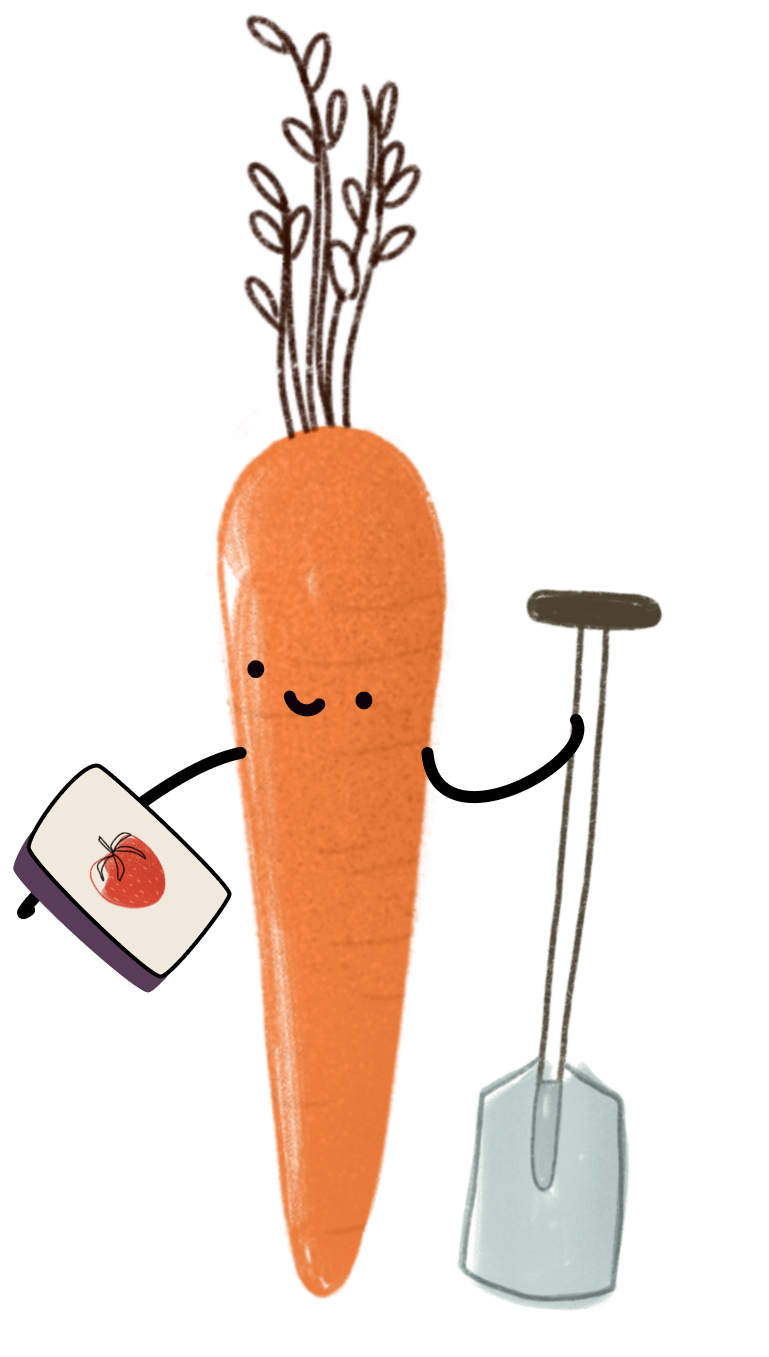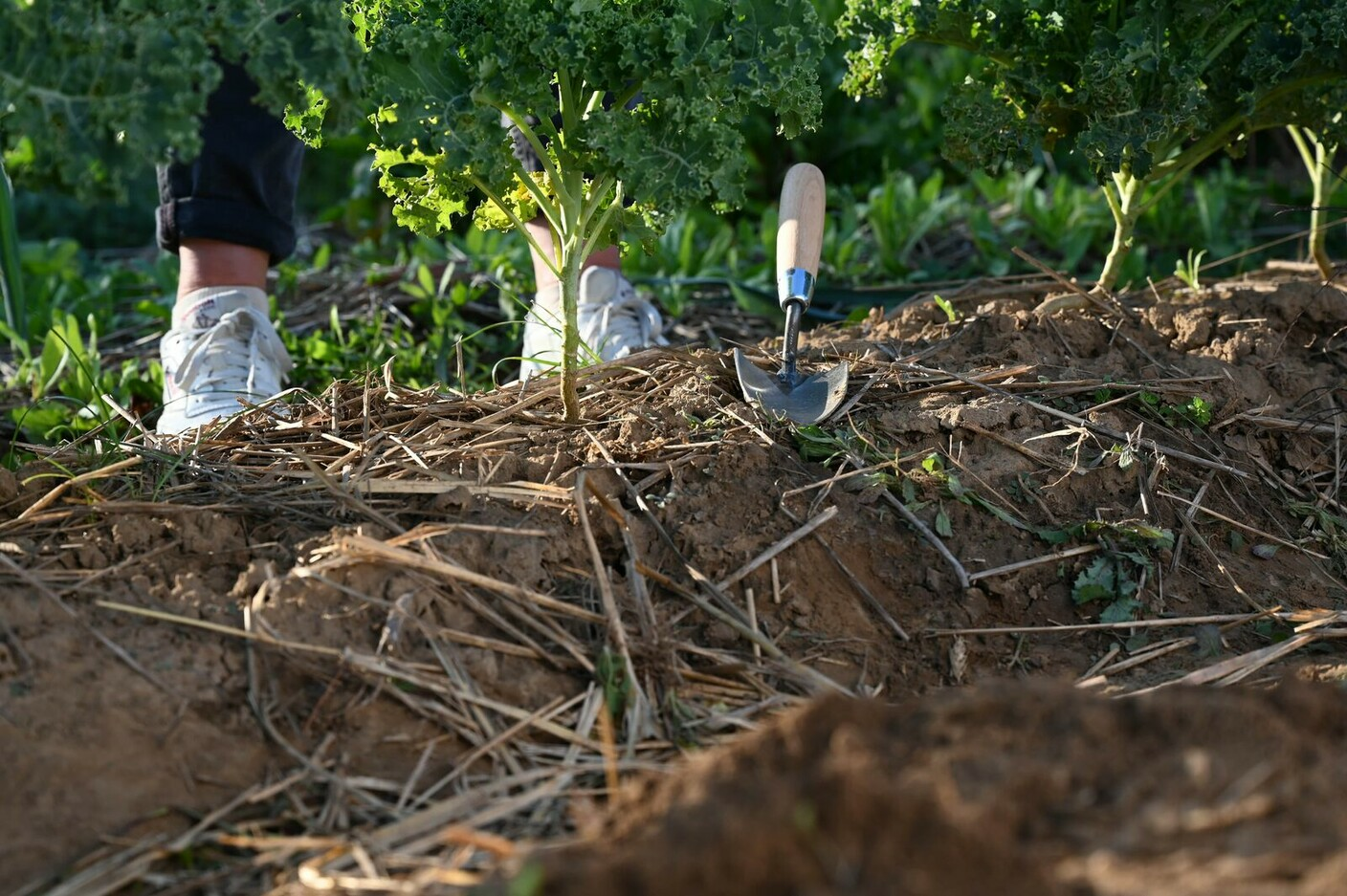
Gardening With the Phenological Seasons: Tips for Gardening
Phenological seasons are not an abstract theory, but a practical guide for all gardening work. If you follow the natural development cycles, you can sow, plant, prune and harvest exactly when the plants are ready. This way, you benefit from healthy crops and reliable yields - without rigid calendar dates.
This Article Contains:
- Dynamic Garden Planning With the Phenological Calendar
- Gardening According to the Phenological Calendar
- Early Spring: Harbingers of Spring
- First Spring: On the Way to Spring
- Full Spring: Spring Is Here
- Early Summer: The Hot Season Begins
- Midsummer: The Highlights of Nature
- Late summer: the transition to fall begins
- Early Fall: The Season Is Coming to an End
- Full Autumn: Nature Begins to Retreat
- Late Fall: Winter Is Just Around the Corner
- Winter: Nature Goes Into Hibernation
- Tools & Tips: How to Make the Switch
- PDF: Gardening With the Phenological Seasons
- Frequently Asked Questions About Gardening With the Phenological Seasons
Quick Overview
Gardening According to the Phenological Calendar
- Early spring: mulching, removing dead plant parts, sowing summer flowers, pruning trees and hedges,...
- Early spring: pruning roses, planting frost-hardy perennials, sowing summer flowers, pruning berries and fruit trees,...
- Full spring: further sowing and planting out heat-loving crops,...
- Early summer: planting out, mulching, first harvests,...
- Midsummer: pruning roses, sowing winter crops, harvesting,...
- Late summer: preserving the harvest, turning compost, harvesting and sowing,...
- Early fall: planting beds, installing nesting aids, pruning fruit trees,...
- Full fall: cleaning the pond, mowing the meadow, planting fruit trees,...
- Late autumn: prepare the garden for winter (frost protection), fertilize beds, feed birds,...
- Winter: Tidy up the garden, reflect on the gardening year, clean garden tools,...
Dynamic Garden Planning With the Phenological Calendar
You can use the phenological calendar to adapt to rising temperatures and changes in nature's development. It helps you to find the optimum time for sowing, planting, pruning and harvesting. As the weather and climate are unpredictable and climate change favors extreme events such as late frosts after warm phases, hail and heavy rain, you need additional protective measures for your plants.
The phenological calendar is based on the developmental stages of certain indicator plants, which are used to define the ten seasons. In this article, you will Find Out What the Phenological Calendar Is and Which Indicator Plants Determine the Individual Seasons.
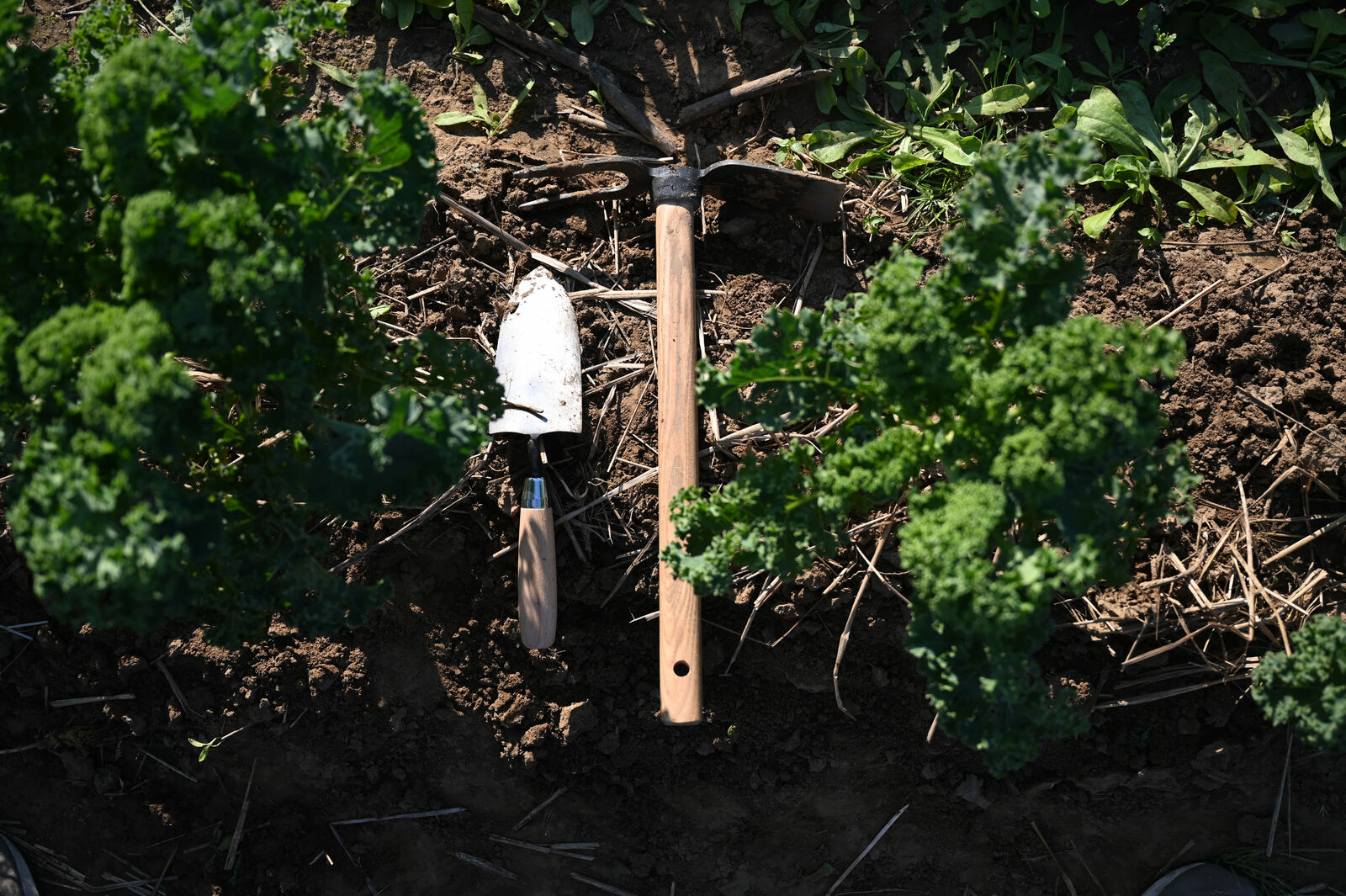
Further Measures for Resilient Gardens
- In the long term, we need to rethink and adapt the choice of varieties and species and can take inspiration from the Mediterranean region, where vegetables thrive in dry, hot regions. You can find an Overview of Drought-Resistant Plants Here.
- In addition, late frosts are unpredictable and a danger for some crops. You should always keep an eye on the weather forecast and apply frost protection if necessary.
- A healthy soil with a high humus content is an advantage when it comes to withstanding heavy rainfall. This can absorb a lot of water and allow it to seep through. Another tool is swales to slow down the flow of water. You can find More Tools and Tips for Resilient Water Management in Your Garden here.
- Hail is a major threat to your crops, as it can destroy everything within minutes. If you live in an area with a lot of hail, it is worth installing hail protection nets.

Plant Knowledge at a Glance
Want to get to know your plants without digging through thick books? In the Fryd Lexicon, you’ll quickly find all the essentials about different plant types and varieties — from sowing, planting, and harvest times to companion planting, location tips, and care advice.
Explore the Lexicon NowGardening According to the Phenological Calendar
Instead of fixed dates, you follow the natural rhythm of your garden. The phenological calendar helps you to be aware of climatic changes and adapt your work flexibly. This reduces the risk of crop failure and allows you to align your activities with the natural schedule. Phenology can also be used to predict the emergence of certain insects - bees or pests. Beekeepers can, for example, recognize when their bee colony will end hibernation.
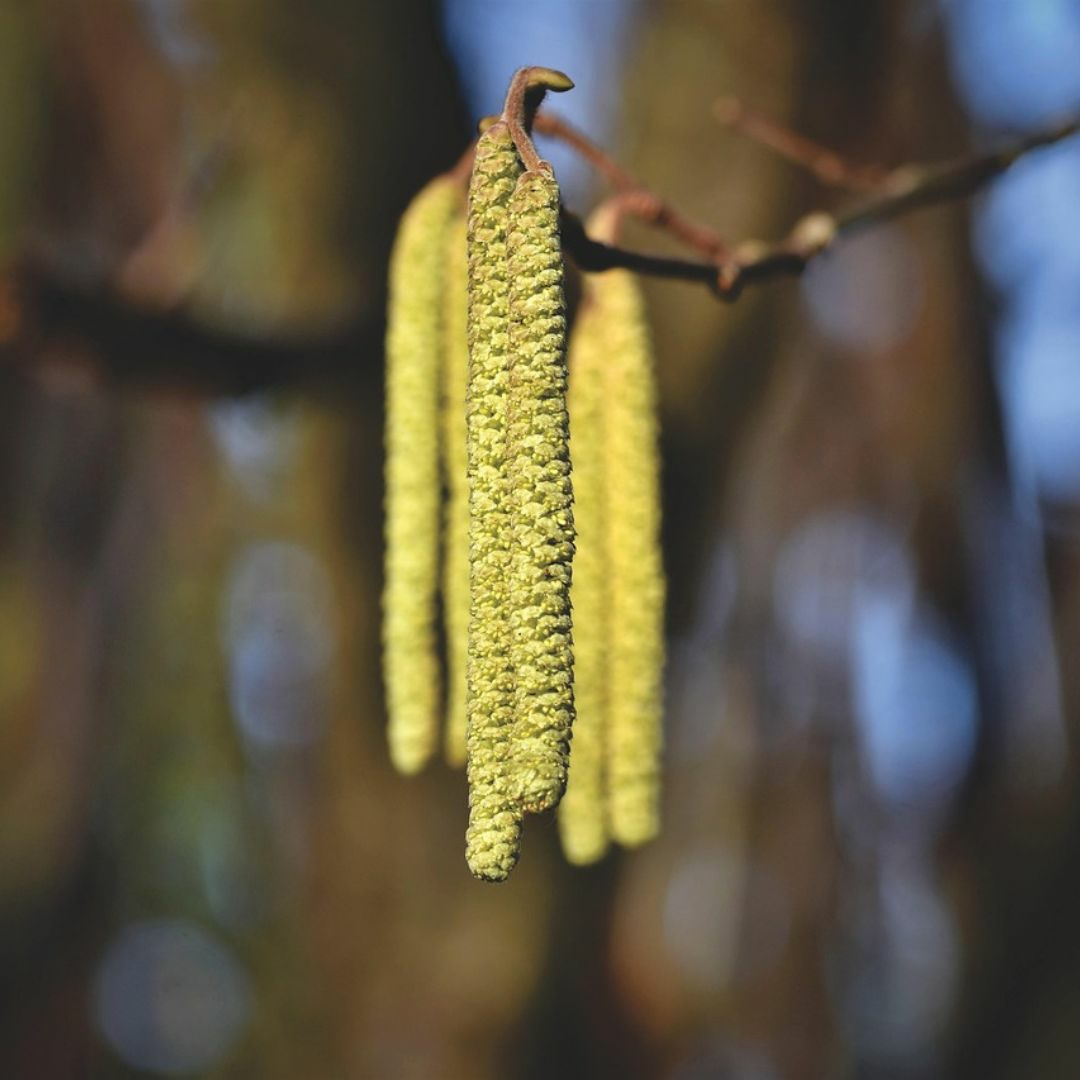
Hazel blossom
Early Spring: Harbingers of Spring

Hazel blossom
Early spring marks the end of winter dormancy. The vegetation is slowly coming to life and you too can slowly become active in your garden again.
Gardening in Early Spring
- Remove dead plant parts and mulch your beds
- Sow summer flowers or wild herb seeds, if necessary, as well as the first seeds in protected cultivation (greenhouse and cultivation)
- Prune fruit trees and hedges (especially summer-flowering shrubs)
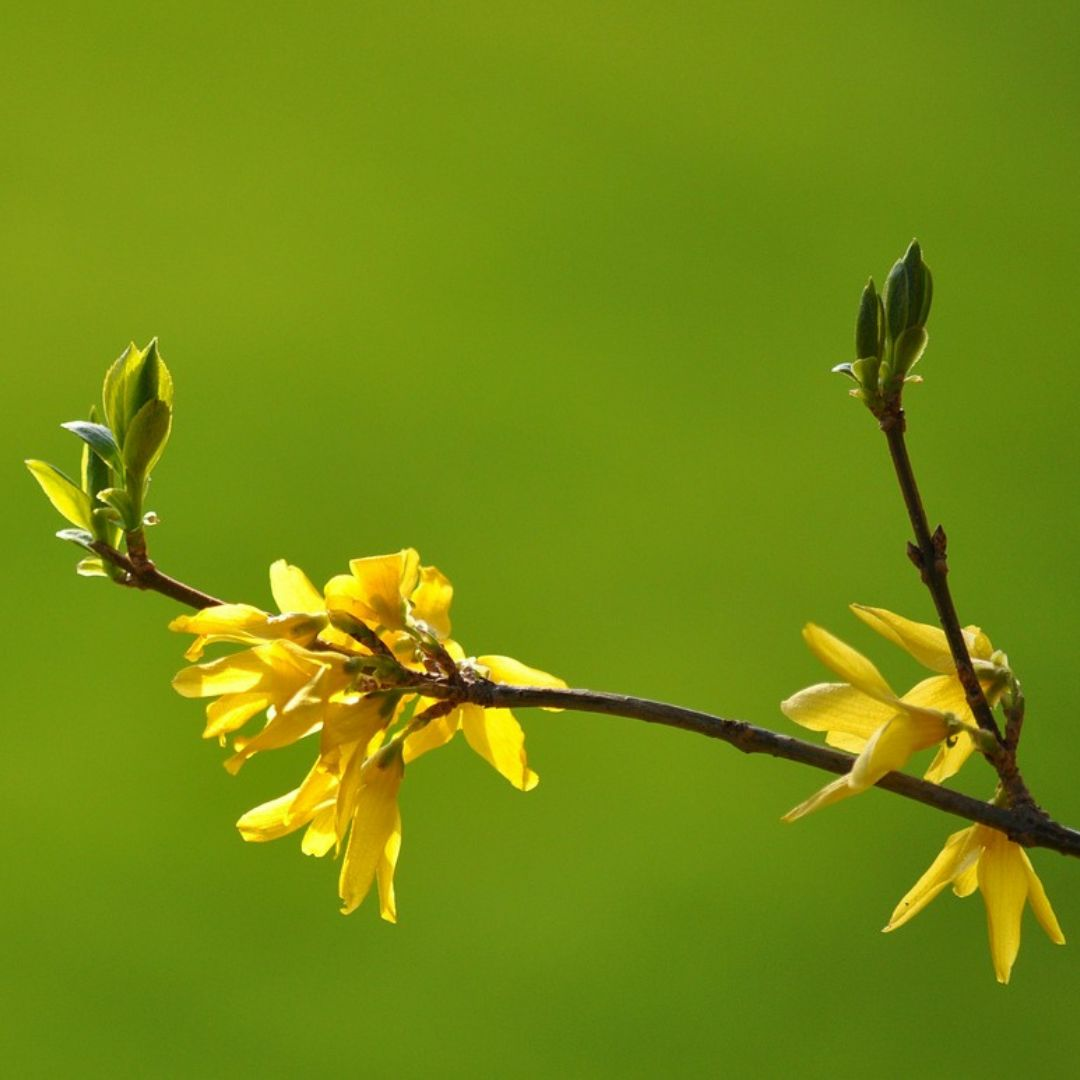
Forsythia blossom
First Spring: On the Way to Spring

Forsythia blossom
The first signs of spring are heralded by the forsythia blossom. The beautiful yellow flowers show you that the awakening of spring is well under way.
Gardening Work You Can Do Now
- Cut backyour roses and fertilize them so that they can soon be in full bloom
- Plant outfrost-hardy perennials and herbs such as parsley and chives
- Sow summer flowers and frost-hardy crops such as chard, spinach, carrots and lettuce
- Prune berry bushes and fruit trees. Hedges should not be cut back until the end of September. In Germany, there is a Federal Nature Conservation Act that aims to protect animals that nest in hedges.
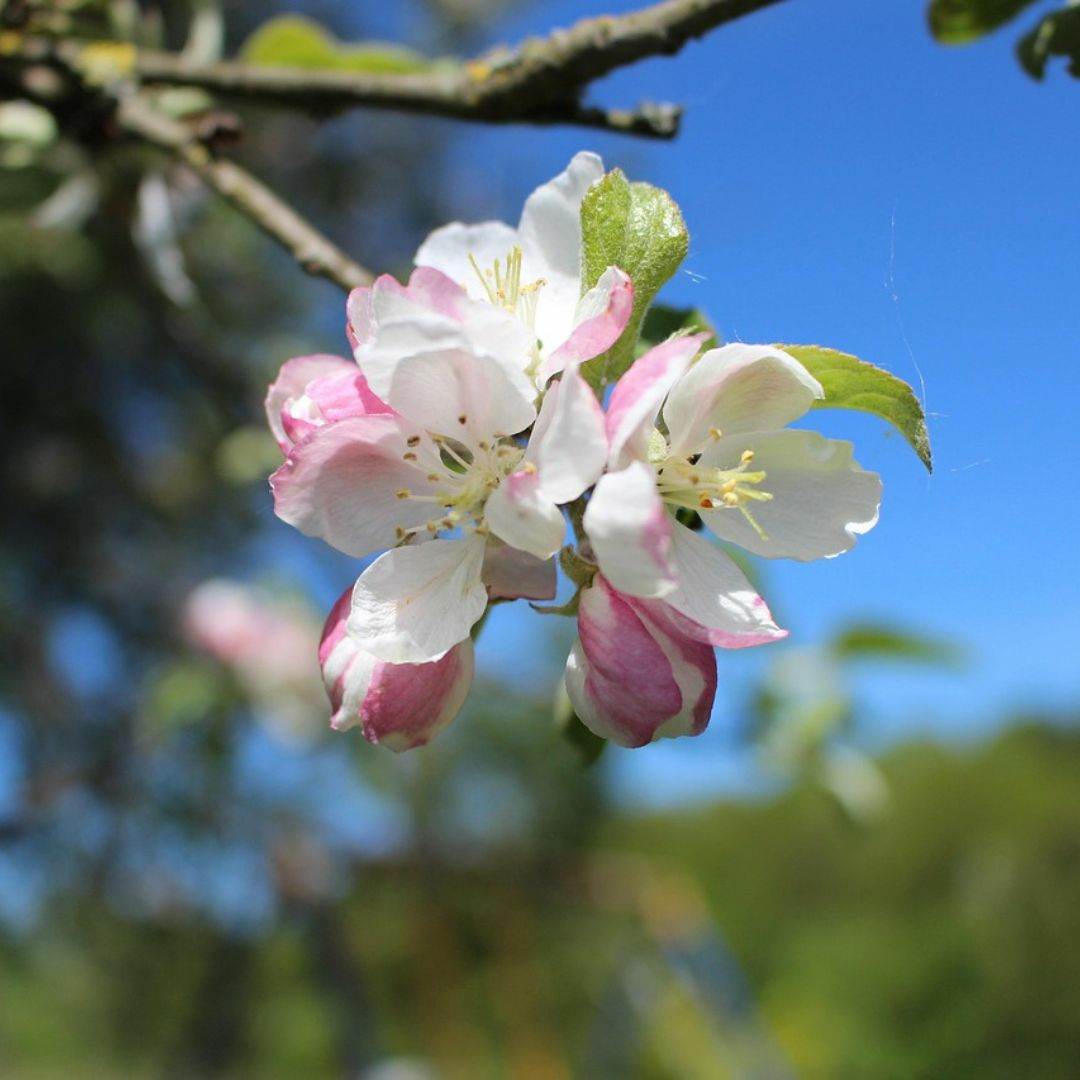
Apple blossom
Full Spring: Spring Is Here

Apple blossom
Spring has reached its peak. Numerous plants such as apple, lilac and horse chestnut are now in bloom. Other biomarkers are the foliage development of oak and hornbeam.
Working in Full Spring
- Further sowing of summer flowers and root vegetables and planting of bulb plants
- Tub plants can slowly be brought out of their winter quarters
- Planting tomatoes and other heat-loving crops outdoors
- The spring flowering plants are now in full bloom and we recommend waiting to cut the grass
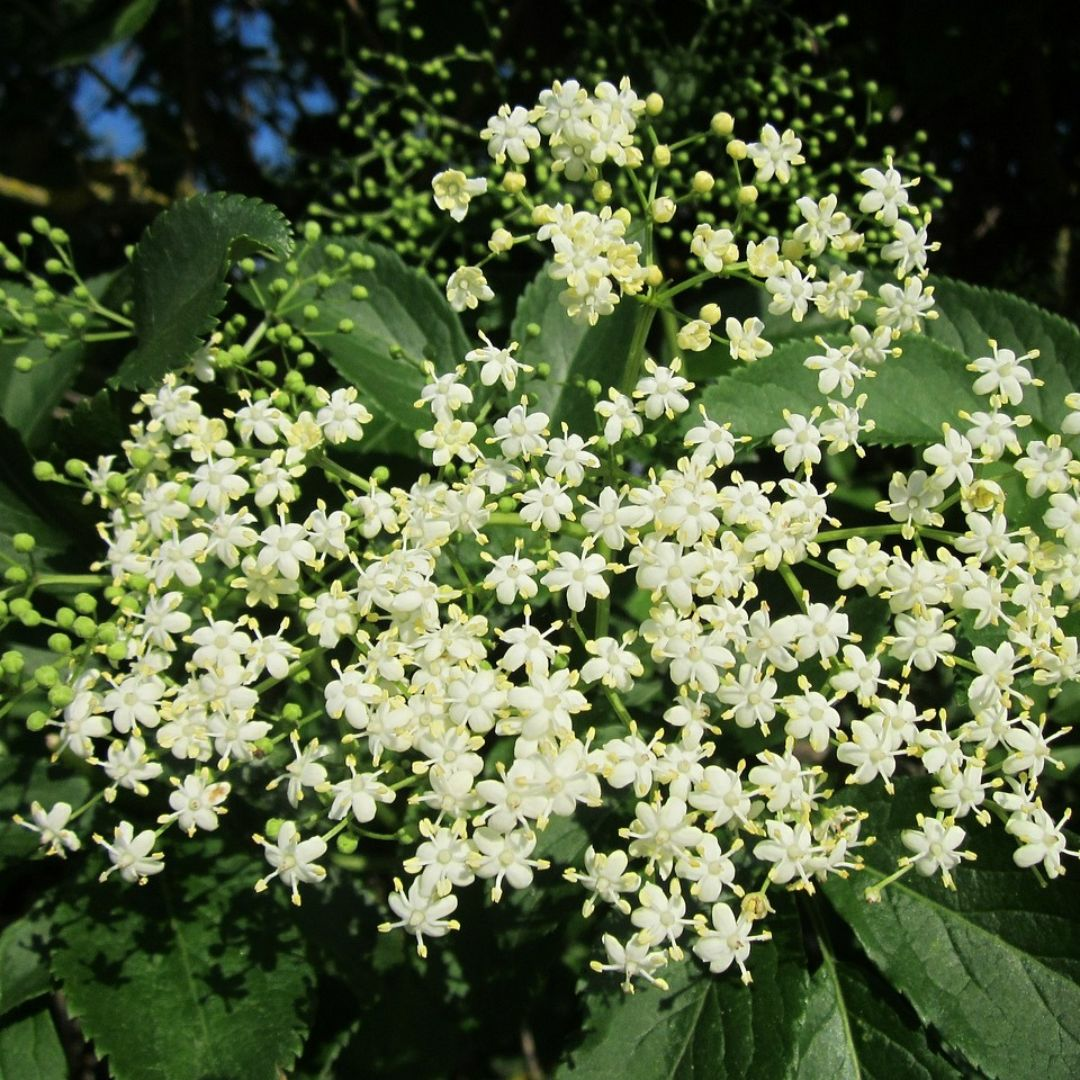
Elderflower
Early Summer: The Hot Season Begins

Elderflower
After spring, the phenological clock slowly turns to summer. In phenology, this transitional phase is early summer and is initiated by the flowering of elderberries.
What to Do in Early Summer
- You can mow your meadow at the end of early summer. We recommend mosaic mowing here to give your garden inhabitants places of refuge. You can find out more About the Right Time to Mow Your Lawn and the Difference Between a Meadow and a Lawn here.
- Many pre-grown plants can now be planted in the bed - if you haven't already done so. Now the danger of late frosts is finally over.
- You can also sow other seeds directly into the open ground, such as beans and flowers, as well as biennial plants such as strawberries.
- Perennials that are not frost-hardy can now be planted out, such as lemon verbena.
- Mulch the beds and weed if necessary.
- You can harvest the first early crops, such as kohlrabi, winter lettuce, rocket or mallow.
- and much more...
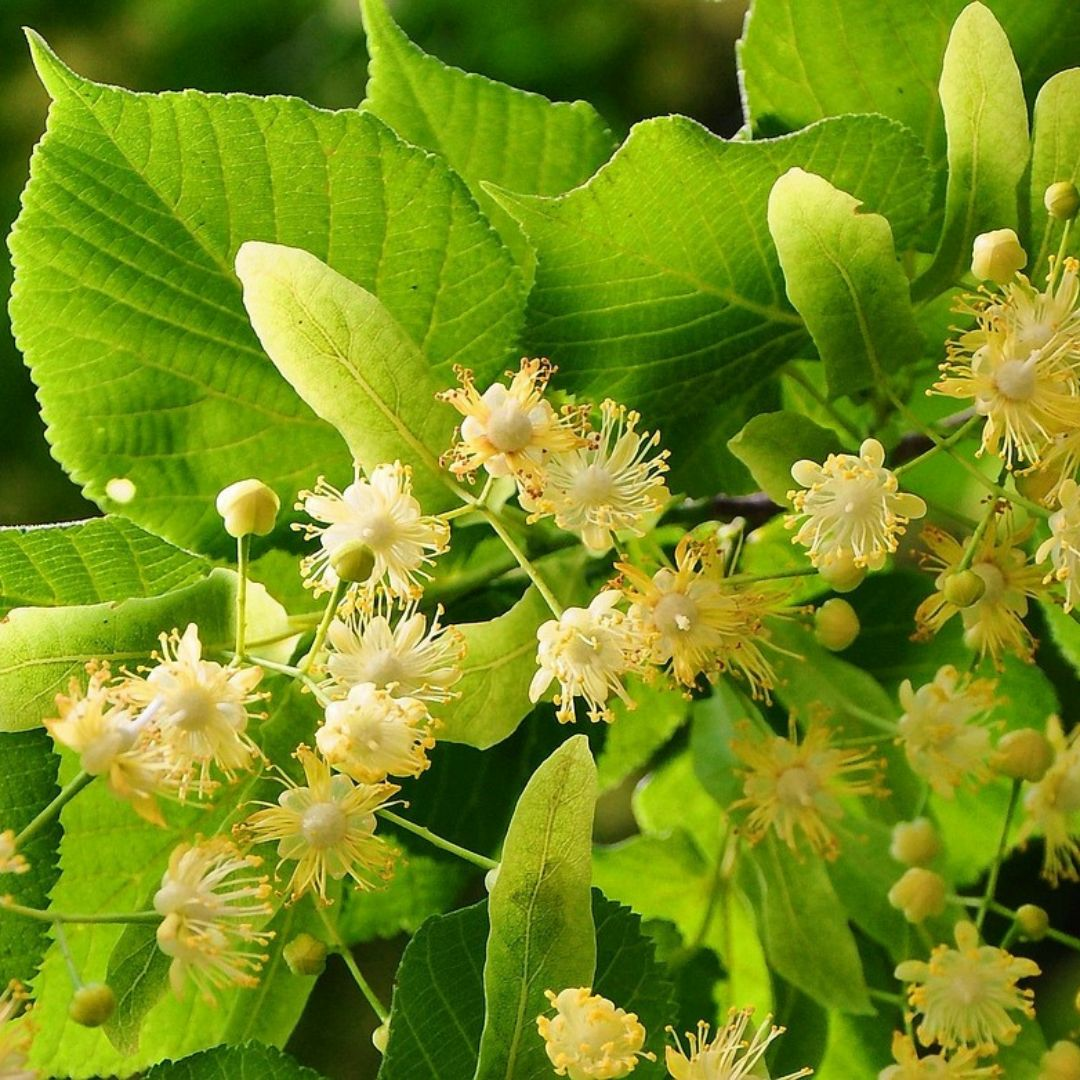
Lime trees in bloom
Midsummer: The Highlights of Nature

Lime trees in bloom
In midsummer, many plants are in bloom and bear fruit. Now you can find fresh cherries from the tree on a warm summer walk and the summer lime trees are in full bloom. The vegetation is now in full swing.
Gardening in Midsummer
- Sowing and pre-breeding winter crops. Prepare for the winter now by preplanting hardy crops such as Brussels sprouts. These can then fill the space in your beds.
- Some fruit trees like to be pruned in summer. This is especially true for pome fruit; stone fruit is better pruned in spring or fall.
- Harvest ripe crops such as lettuce, beet, carrots, broccoli and peas - they are now starting to produce a good harvest. Many fruits are also ripe, such as raspberries and currants.
- Cut backyour roses regularly so that they continue to produce new flowers.
- The hottest time of the year begins. Water your beds as needed; a layer of mulch helps to reduce evaporation.

First early ripe apples
Late summer: the transition to fall begins

First early ripe apples
Summer is coming to an end and many fruits are ready to be harvested: there are plums, quinces, apples and many other delicious fruits. You can enjoy the fruits of your gardening labor and, in the best case, have a rich harvest. Now it's time to enjoy and use them.
What to Do in Late Summer
- Now you can sow winter crops such as lamb's lettuce, winter postelein or radishes to fill any gaps in your beds.
- Harvest numerous vegetables such as cabbage, lettuce, tomatoes, eggplants, cucumbers, zucchinis, pumpkin, etc.
- Now is the time for preserving: freezing, boiling, drying, pickling or fermenting. Read more about Preserving Fruit and Vegetables here.
- You can use this time to turn your compost: remove mature compost, turn half-rotted material and incorporate new garden waste.
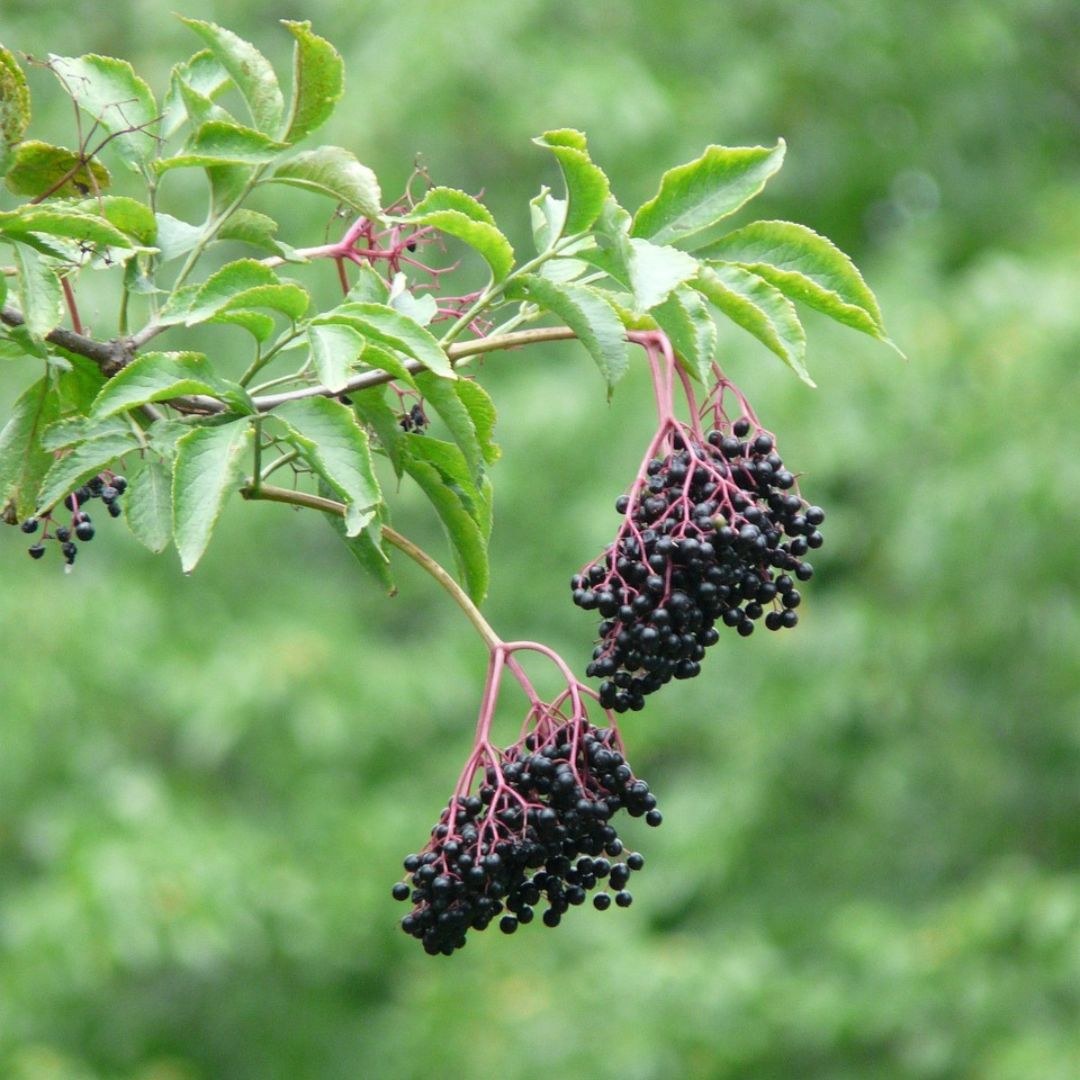
Holunderbeeren
Early Fall: The Season Is Coming to an End

Holunderbeeren
Autumn begins: Elderberries are ripening and autumn crocuses are blooming. There is still plenty to do in the garden to bring the season to a fitting close.
Gardening Tasks in Early Fall
- Lots of fruit is still ripe and you can harvest and get busy preserving.
- Now is a good time to create new beds such as no-dig beds or raised beds. A lot of garden waste will be produced in the coming weeks, which can be reused directly as organic material.
- You can place nesting aids for birds in your garden. The birds will then use these to overwinter and possibly breed in the spring.
- If you want to sow green manure for the winter, now is a good time.
- You can now plant early winter crops. This will give them enough time to grow before winter dormancy sets in. Most winter crops will then hardly grow at all.
- You can also prune fruit trees and berry bushes - and you can prune your hedges again. You can use the prunings to create a Benjes hedge or deadwood hedge for insects and other garden creatures.
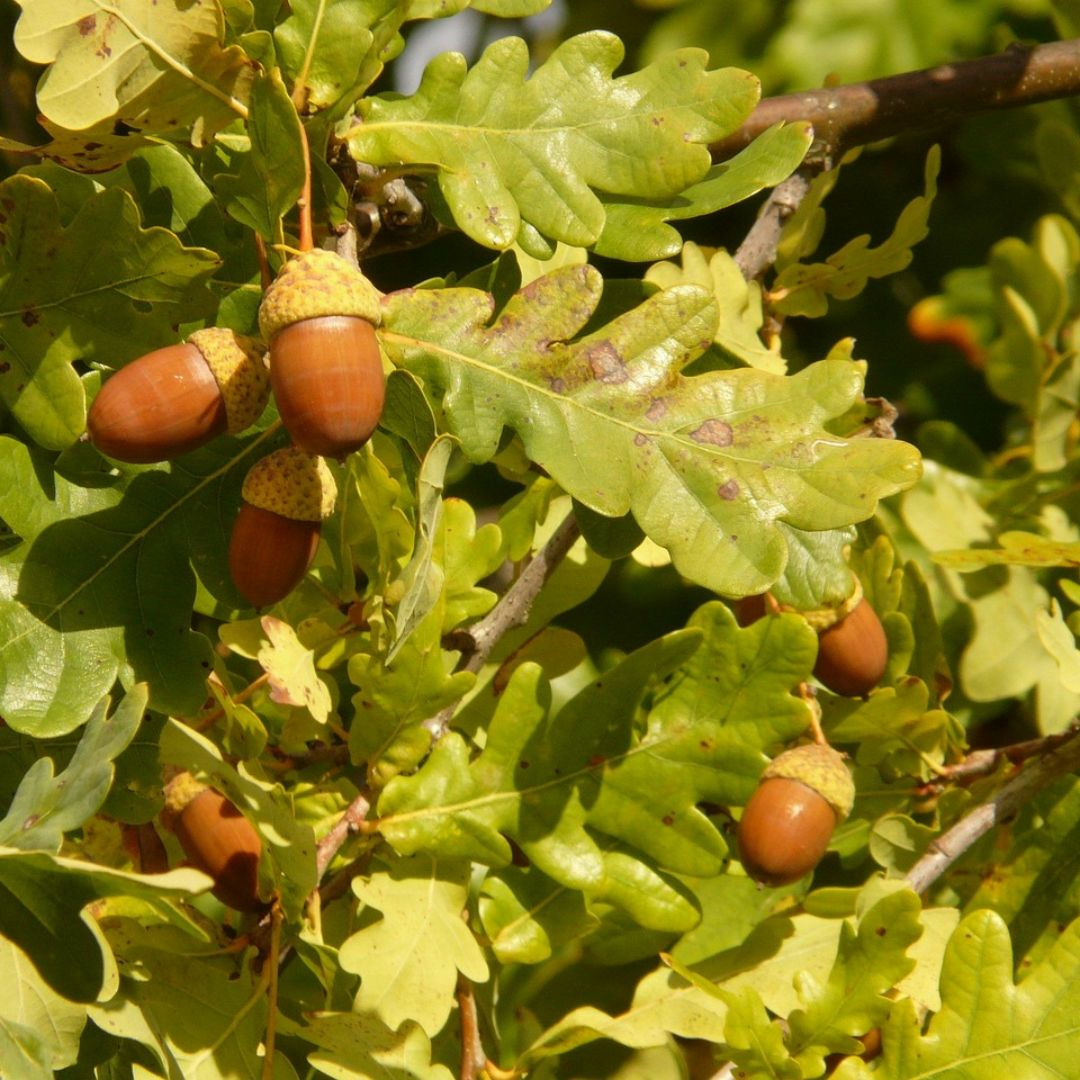
Acorns
Full Autumn: Nature Begins to Retreat

Acorns
The forests are beginning to turn beautiful colors and the falling leaves create a sea of colorful foliage. Many people love autumn because of the many colors in nature. The plants slowly but surely go into hibernation. Full autumn is characterized by the fruits of the pedunculate oak.
Gardening in Full Fall
- You can now plant early-flowering bulb plants for next spring. Plant tulips, daffodils, crocuses or hyacinths now, as long as there is no frost on the ground.
- Walnuts and chestnuts are ripe now and you can harvest and dry them. There are also still apples, pears and quinces for delicious juices and cakes.
- Autumn is a good time to plant fruit trees. They can form deep roots and grow over the winter. They then sprout again in spring. You can find Instructions for Planting Fruit Trees here.
- Non-hardy plants should be dug up slowly or placed in a pot and put in a sheltered place. They can then overwinter in these winter quarters.
- If you have a garden pond, now is also a good time to clean and maintain it.
- You can mow your meadow again and put your lawn into hibernation too.
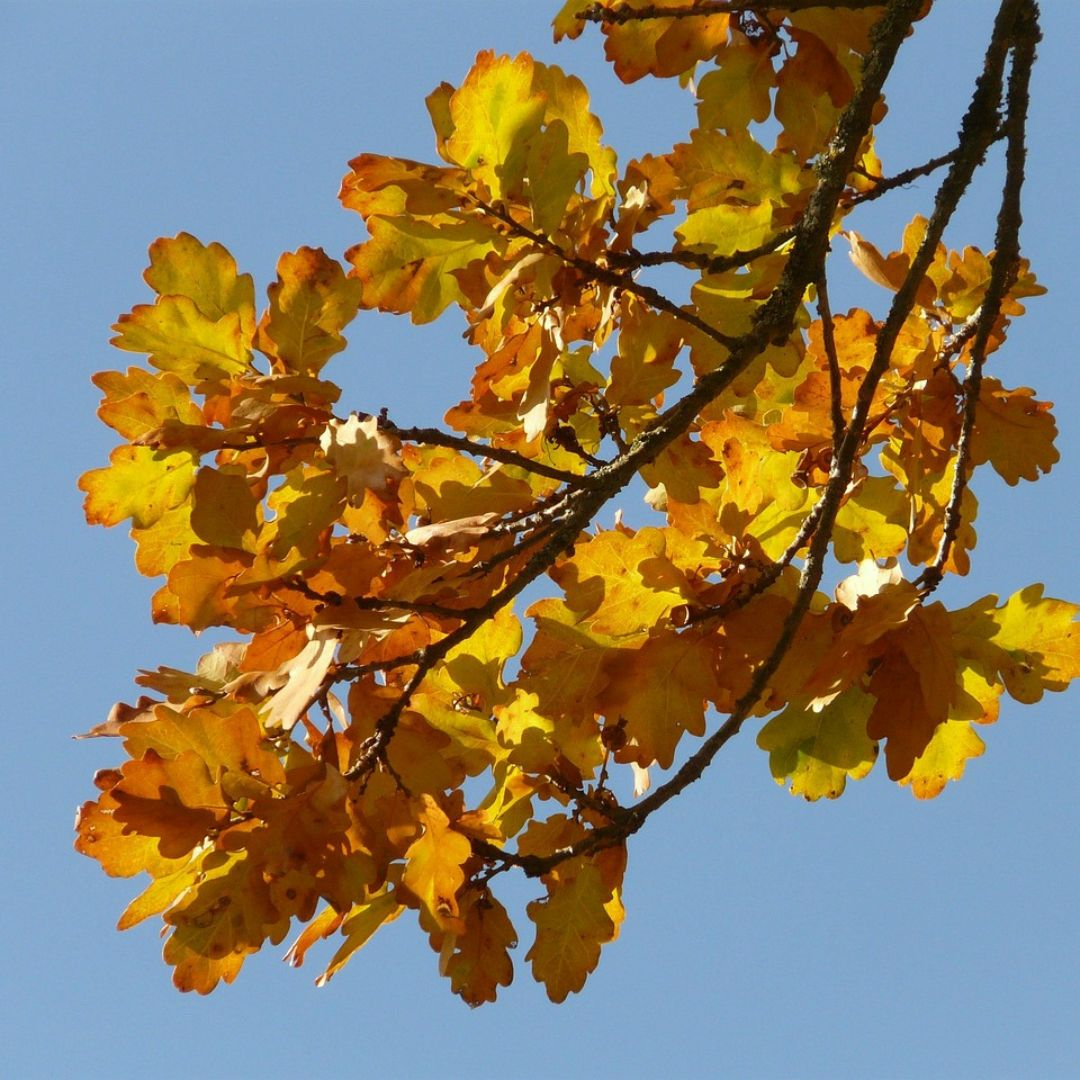
Colorful autumn forest
Late Fall: Winter Is Just Around the Corner

Colorful autumn forest
Winter is knocking on the door and it's time to prepare our garden for winter. Most deciduous trees are already losing their leaves and you can see that nature is retreating further and further. This means that the garden is also becoming a little quieter, as many plants do not grow at all or only very slowly during the winter dormancy period.
What to Do in the Garden
- Apply frost protection as soon as the first frosts set in. Sheep's wool or fleece, for example, have a good insulating effect.
- You can also plant fruit trees, shrubs and trees.
- Now bring the last potted plants and non-hardy plants into their winter quarters.
- If you want to fertilize your beds with compost, now is a good time to apply it. Using the no-dig method, apply about 5 cm of compost to your beds every year - as a natural fertilizer for plants and soil.
- You can provide your birds with food for the winter. Here you can find a Recipe for Bird Food for the Winter - so-called fat food.
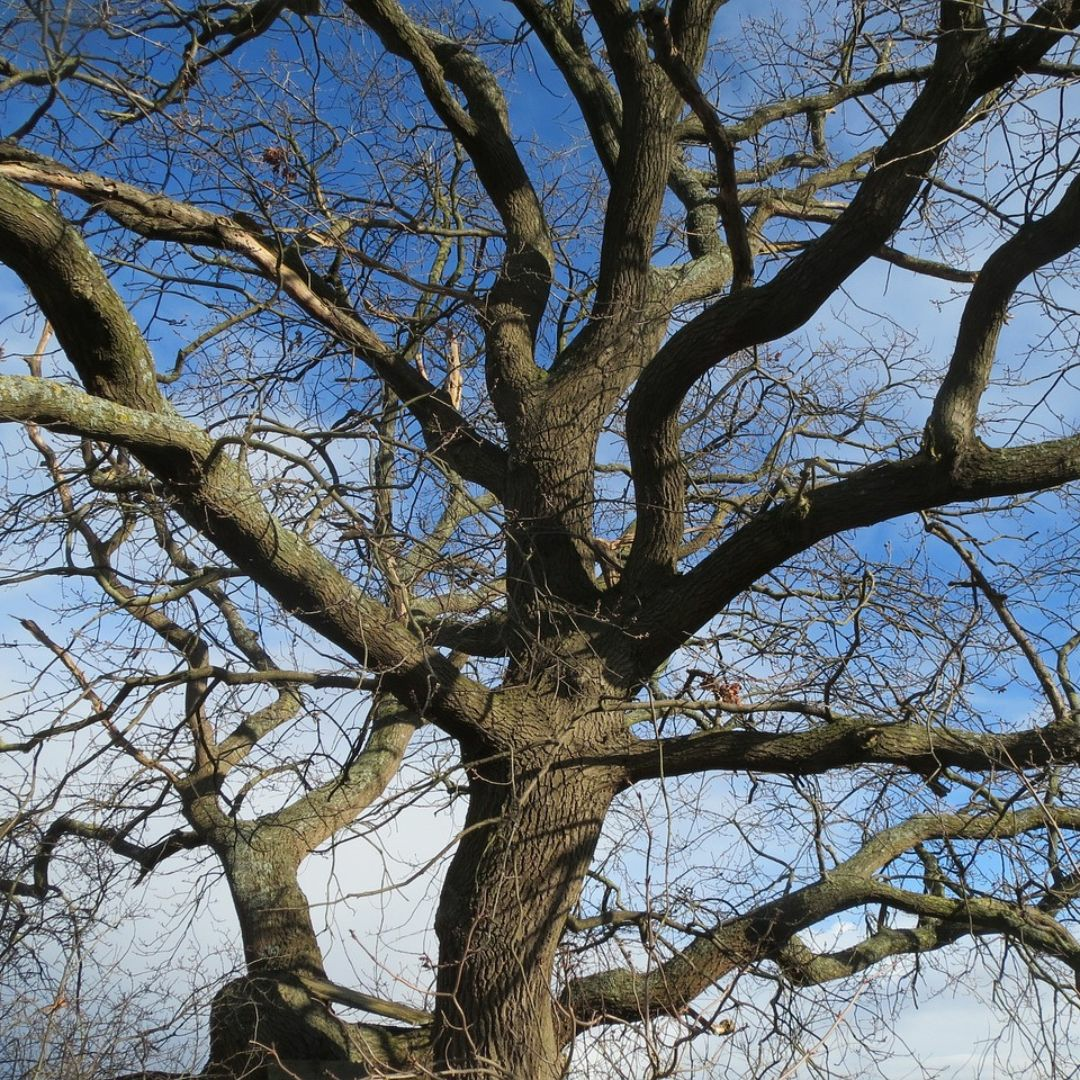
Hibernation
Winter: Nature Goes Into Hibernation

Hibernation
The trees are bare and nature has finally retreated. Now the cold and dark season begins, in which nature regenerates in order to blossom anew next year. Peace returns to the garden and you have time for reflection.
How to Make the Most of Winter
- You can tidy up your garden: clean the garden shed and get an overview of your materials. Take a look at which seeds you still have and which you may need to buy new ones.
- Now you can clean and disinfect your garden tools. This will prevent diseases in your garden, as these can also be transmitted via pruning tools. Your garden tools will also last longer if they are well cared for.
- Reflect on the garden year and write down your observations. Here you can also record your phenological observations and document what worked well and what didn't work so well.
- In the next step, you can use the peace and quiet of winter to plan your garden and beds for the following year. Think about which crops you want to plant, what your mixed crops should look like and how you want to incorporate them into your crop rotation.
Tools & Tips: How to Make the Switch
When gardening with phenology, the most important thing is to systematically link your own observations and empirical values and refine them over the years: note which indicator plants occur in your garden, which ones flower first and what conclusions you have drawn from them. Document every adjustment - such as changes to sowing or pruning dates - and their successes. If you don't have such a practiced eye for identifying wild plants, you can use apps such as Flora Incognita or PlantNet to identify indicator plants . These usually recognize the common species reliably.
It can help to establish a clear observation routine here by regularly walking the same path through flower beds or the surrounding nature. This allows you to react in good time and take additional protective measures if necessary. You can also find numerous long-term data for Germany as well as lots of information on phenology on the Website of the German Weather Service (DWD). You can see data from your local weather service phenological calendar for orientation.
If you have any questions or comments, please write to us at [email protected].
Would you like to receive helpful gardening tips all year round and plan your own beds optimally? Then register here or download the Fryd app for Android or iOS.
Fryd - your digital bed planner

Marie
Marie is an agronomist. She is particularly interested in the sustainable and organic cultivation of vegetables and other plants. In her own garden, she gained experience and likes to try things out to learn from nature. She is particularly interested in the values and principles of permaculture, in order to contribute not only to the well-being of nature, but also to the well-being of people and future generations.
Learn MoreCurrent Topics in the Community
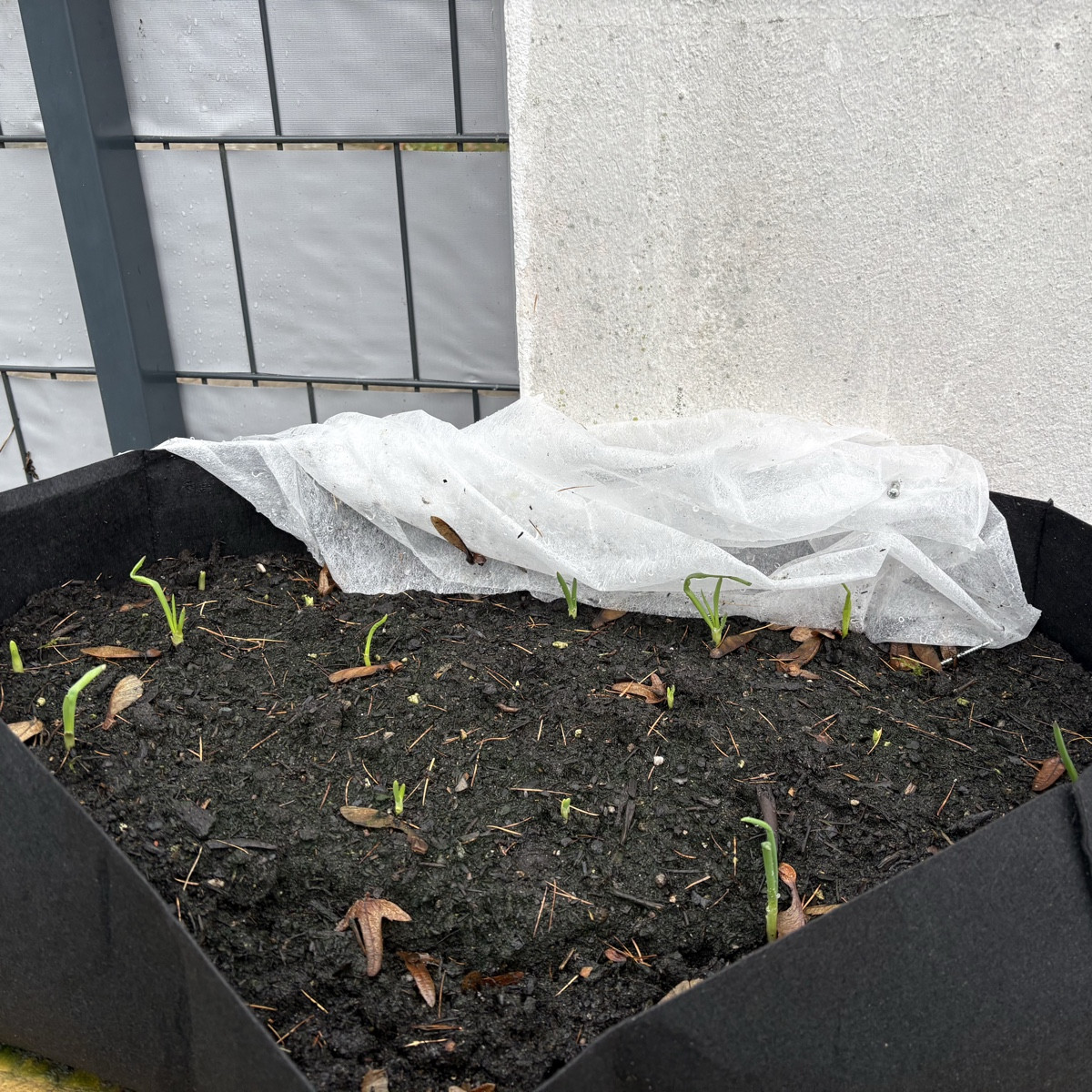
Liked 2 times
My winter onions are also growing quite well. They are of the Red Cross variety. I planted them on 28.10 in a felt pot 60x30x20 cm
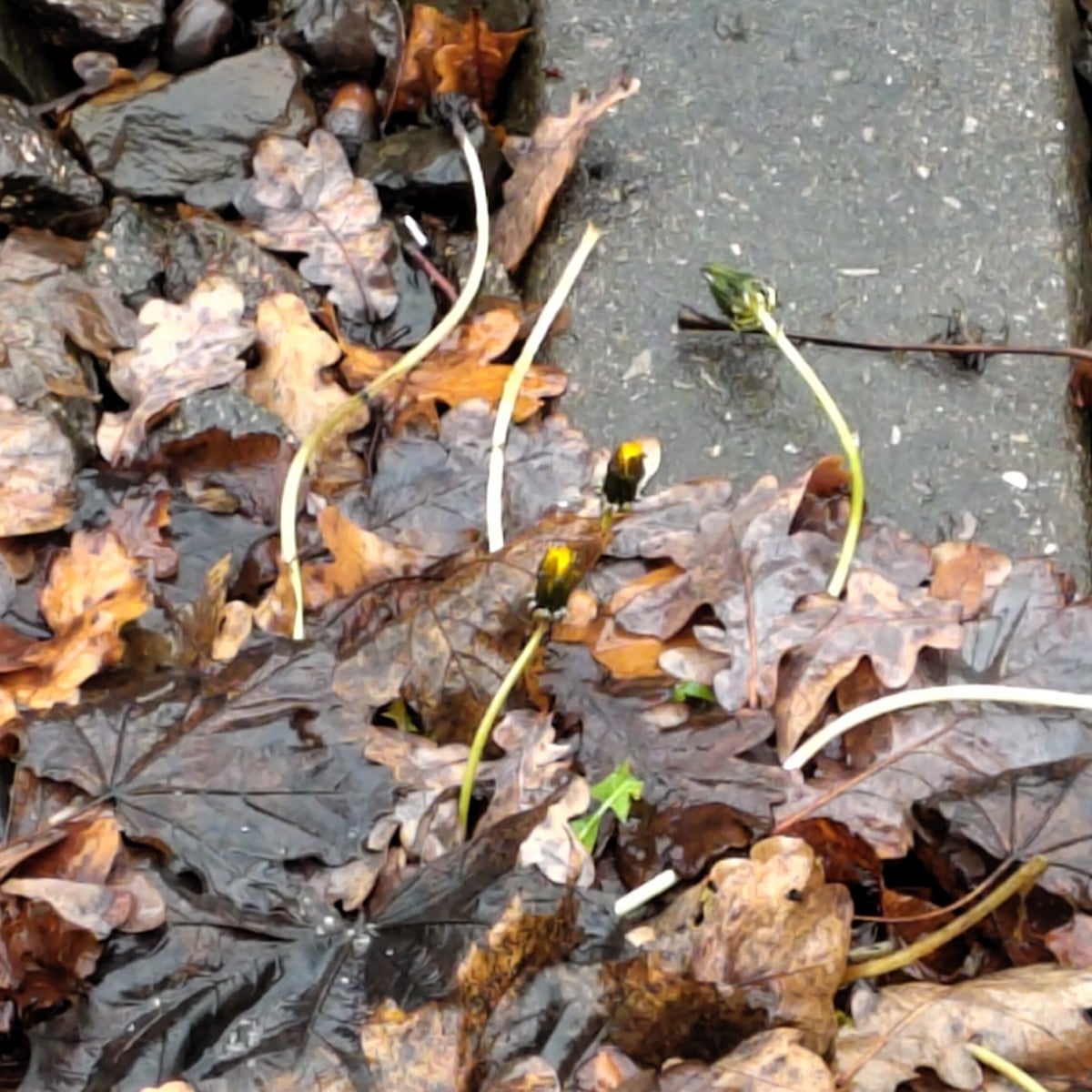
Liked 7 times
Another post from the curiosities section: I noticed this dandelion at the streetcar stop in a 'wintry' 13°C weather. It obviously thinks that snow and double-digit frost were enough winter and is now pushing new flowers through the foliage. It's a shame it's by the tracks, otherwise it would probably have ended up in my salad. 😋
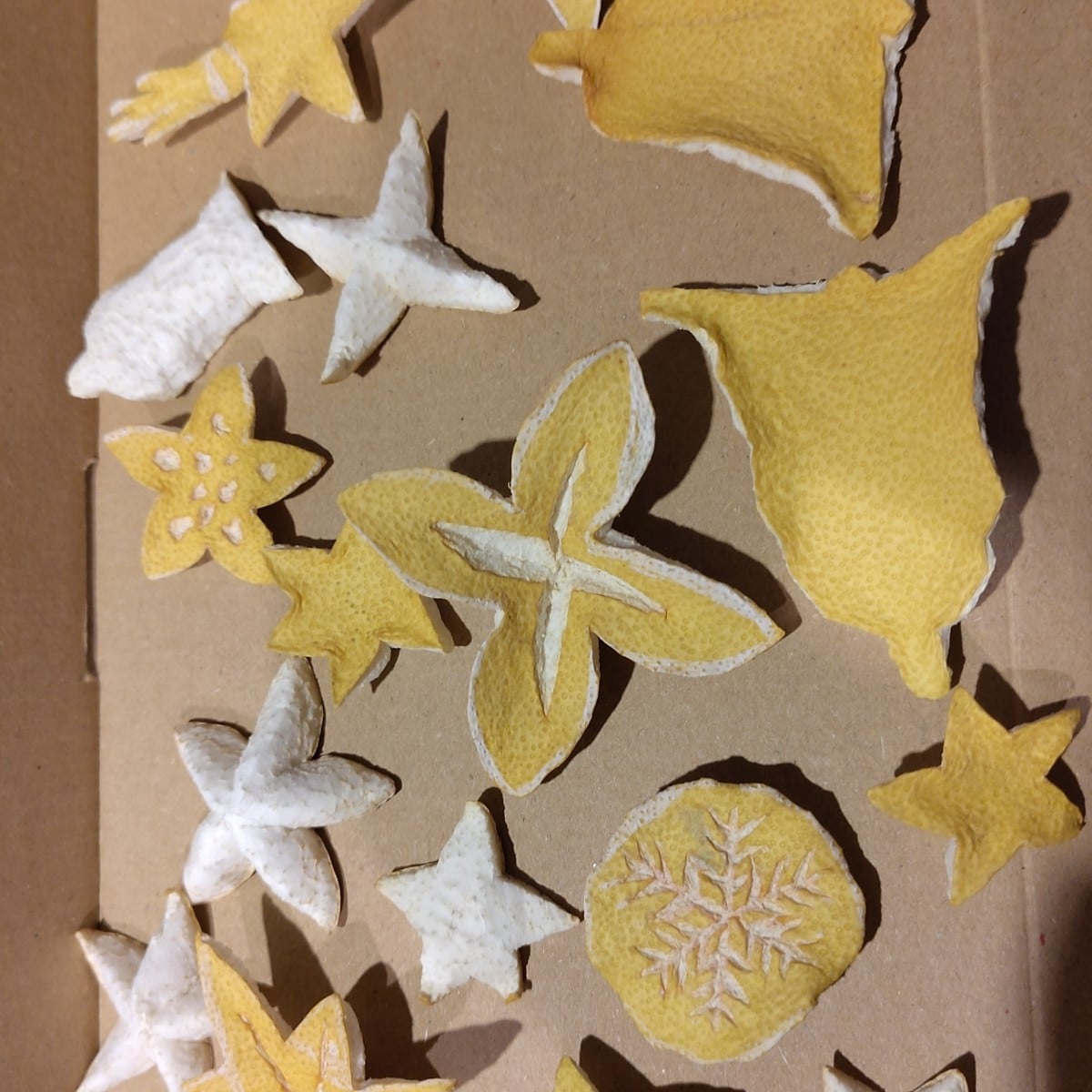
Liked 17 times
As a suggestion for those who eat citrus fruits and have some time in the evening: simply cut a few simple shapes out of them with a sharp knife and dry them on the heater. The next day it was bone dry in our house ;)
Show 3 answersPopular Articles
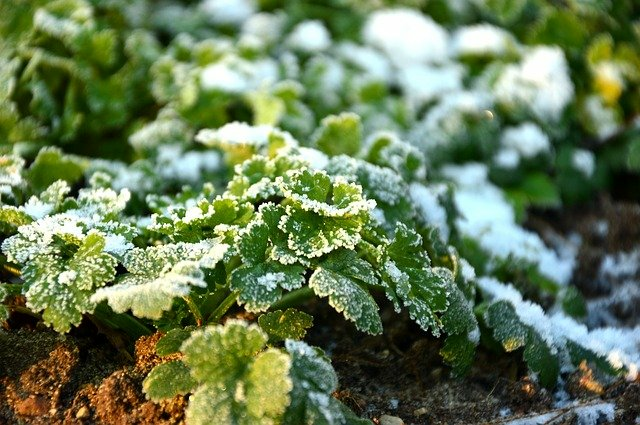
Overwintering Parsley: How to Do It Successfully
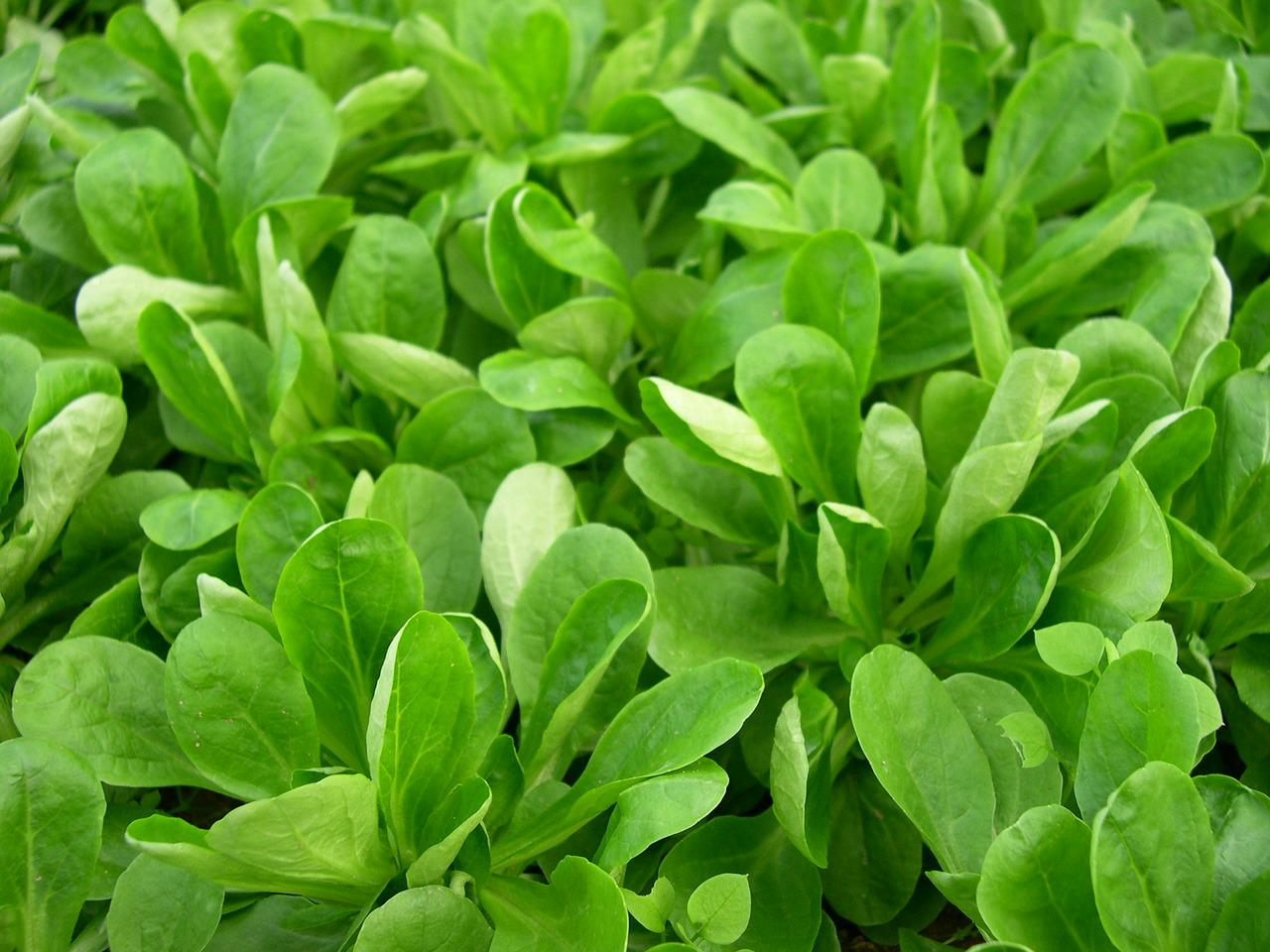
How to Grow Lettuce in Winter: Varieties, Sowing, Harvesting

Growing Sage Plant: Tips for Sowing and Harvesting
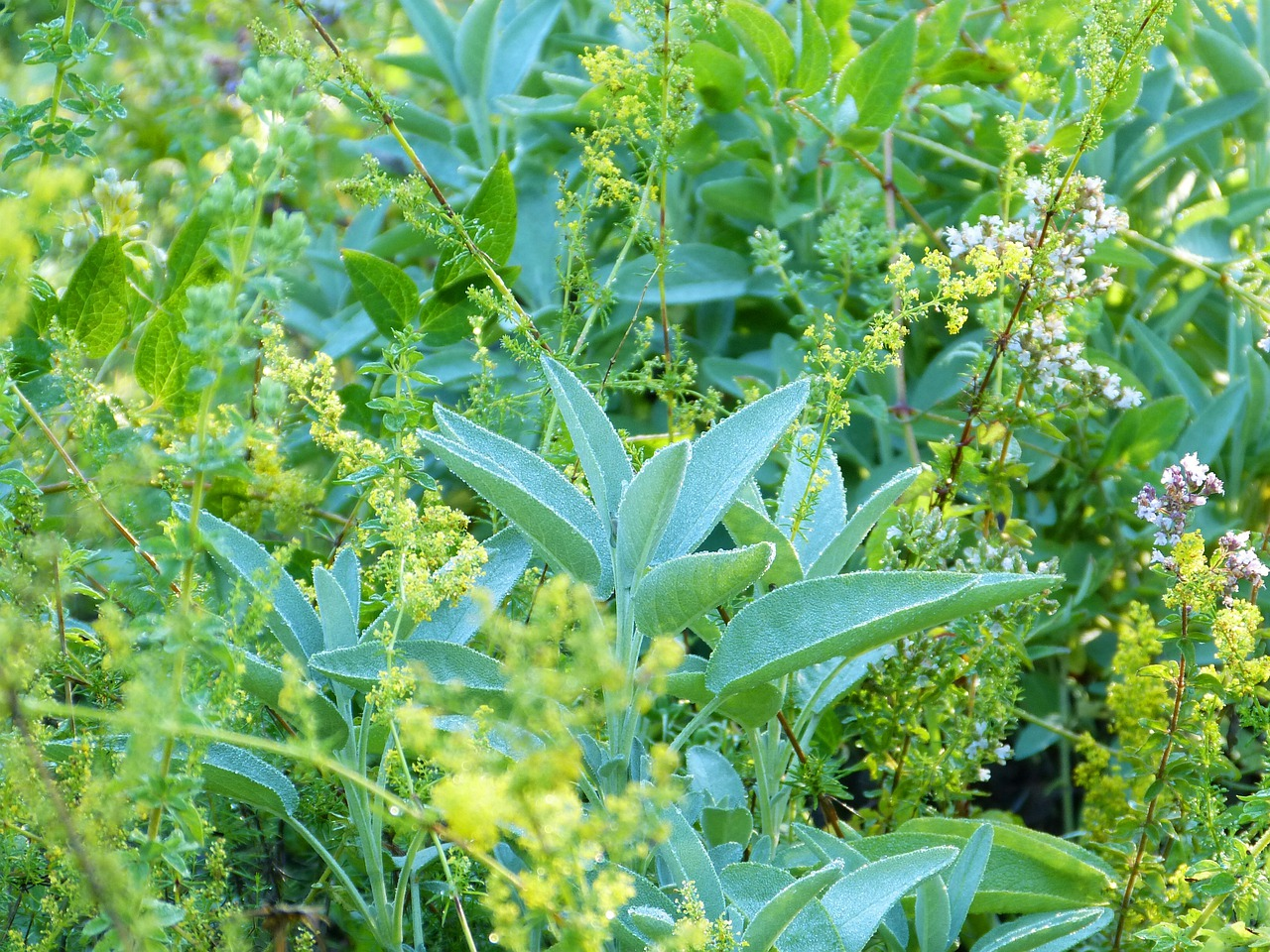
What Herbs Can Be Planted Together?
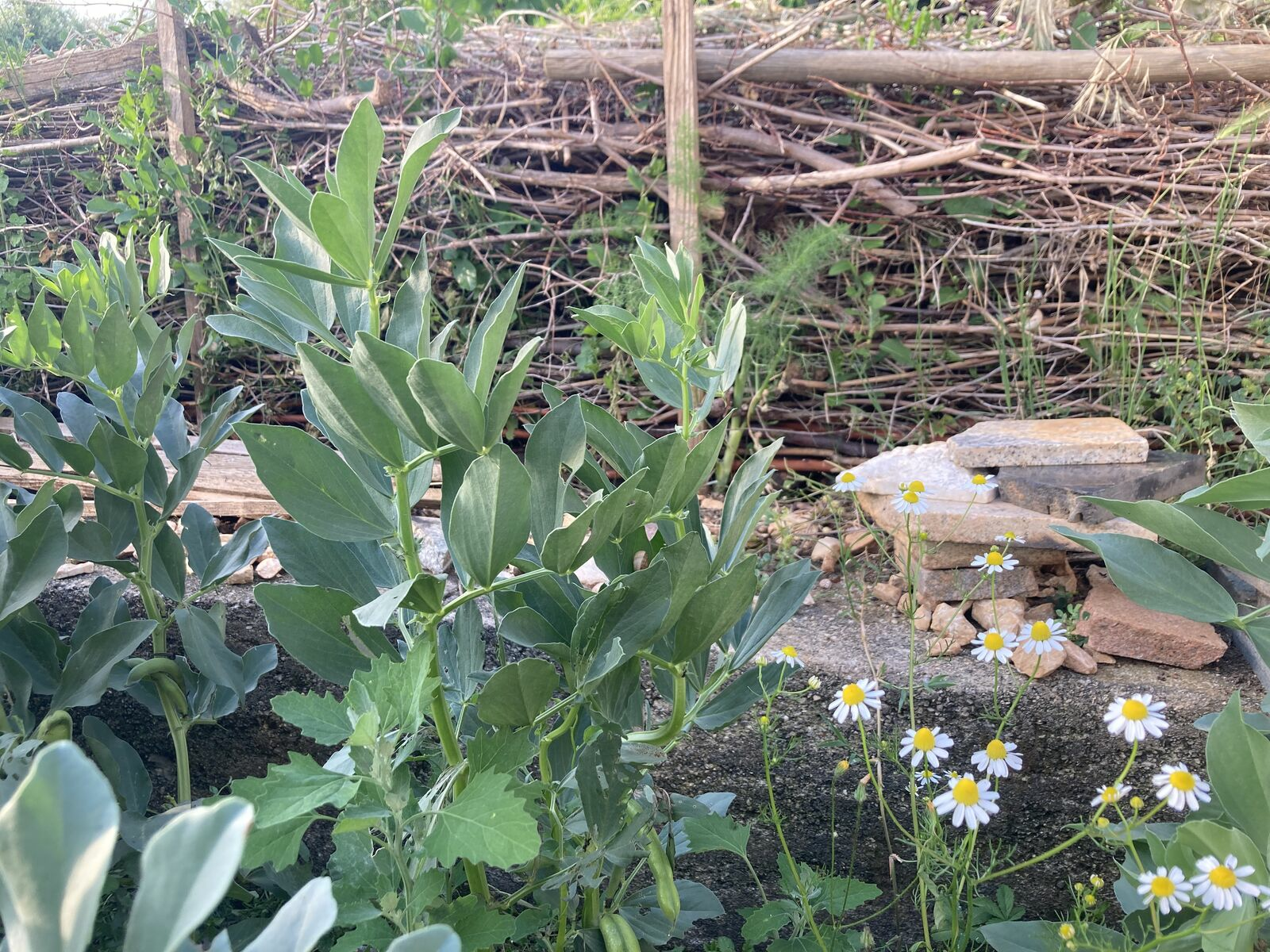
Create & Design a Permaculture Garden
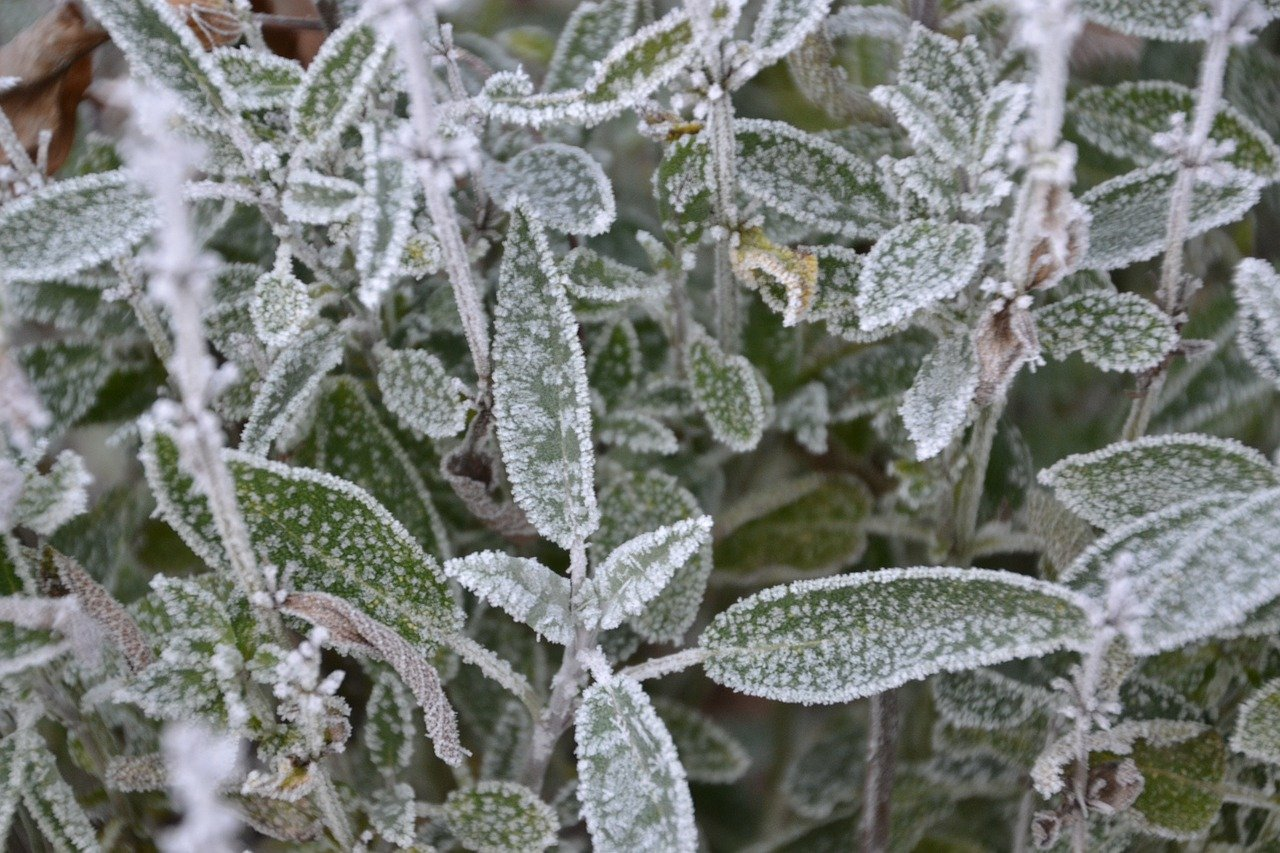
Overwintering Plants: Tubs, Pots and Raised Beds

Pruning, Fertilizing & Propagating Currants: Care Tips
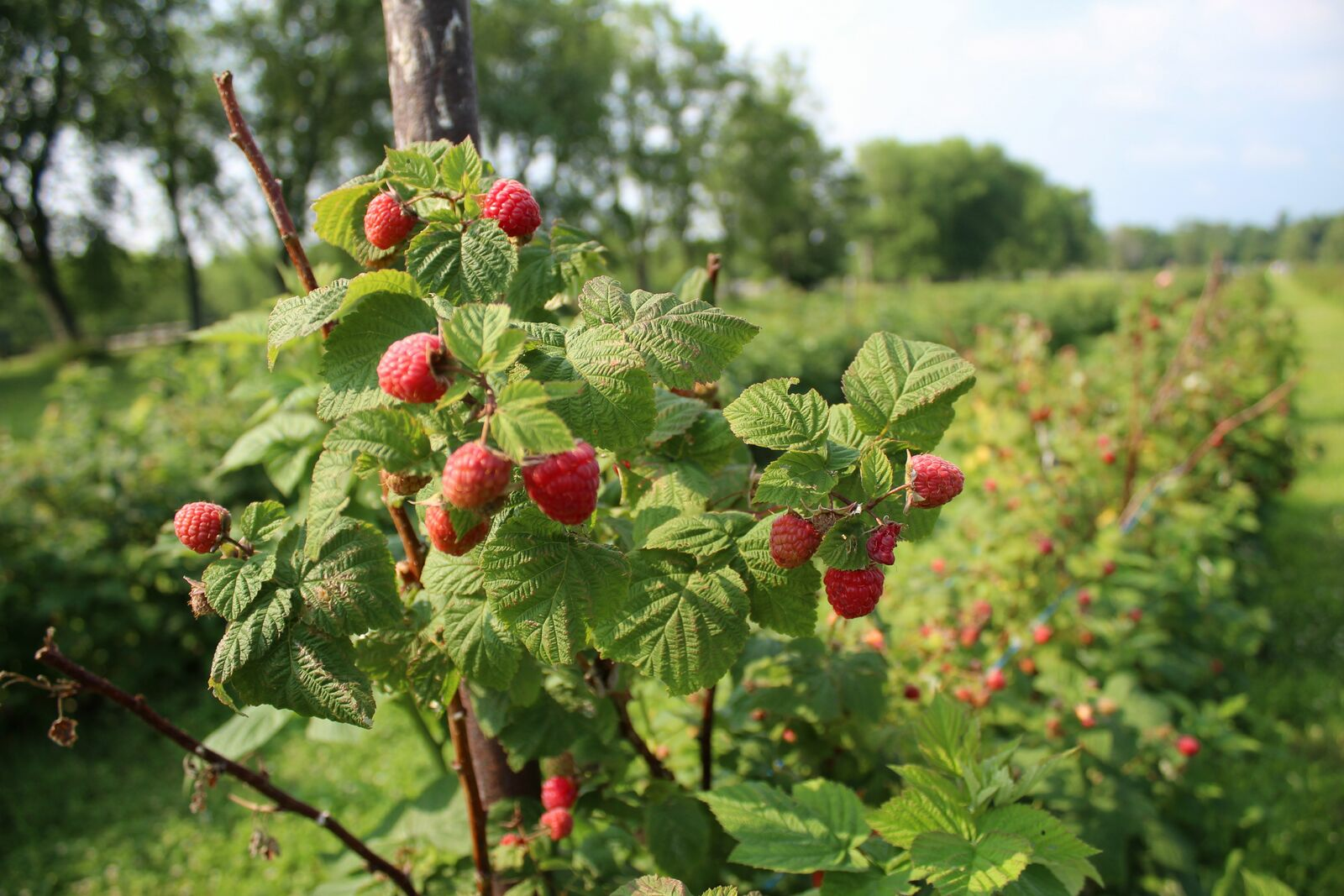
Pruning Raspberries: How to Do It
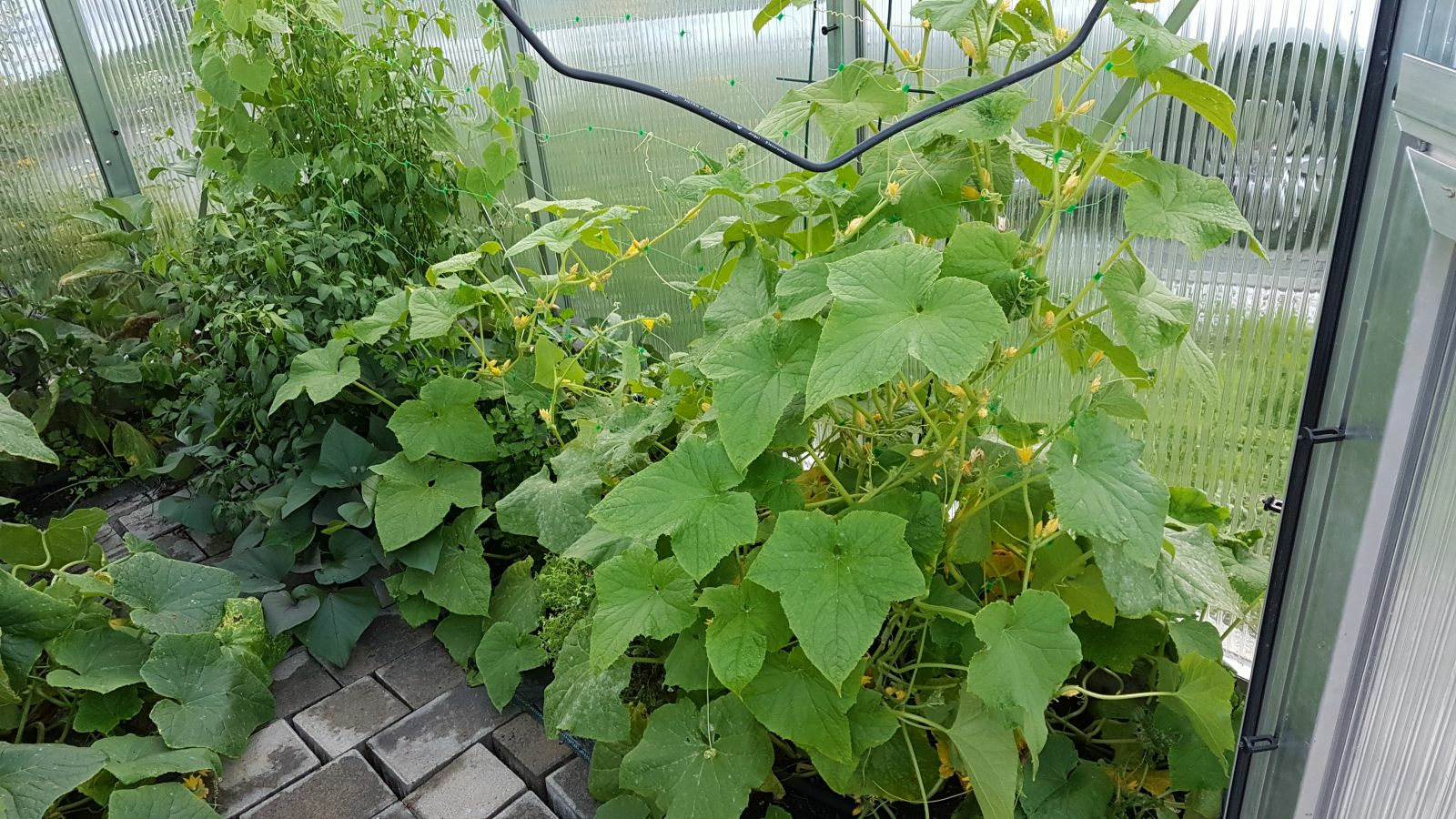
Vegetable Garden With Greenhouse: How to Use Greenhouse Effect
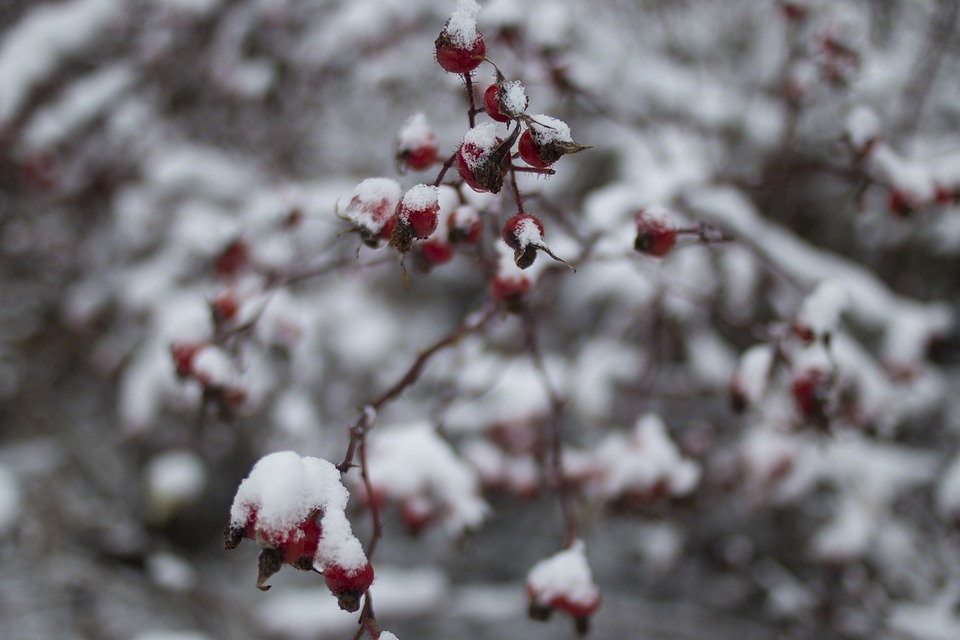
Winterizing Beds and the Garden: How to Do It
FAQ
What are phenological seasons?
Phenological seasons are ten periods of the year that are defined by the developmental stages of certain indicator plants instead of fixed calendar days.
Which indicator plants mark the seasons?
Examples of indicator plants are hazel blossom in early spring, forsythia blossom in early spring, apple blossom and the foliage unfolding of oak and hornbeam in full spring.
Why is it worth gardening according to phenology?
Because you can react flexibly to climate fluctuations and thus achieve healthier crops and more reliable yields.
How do I switch to phenological gardening?
Systematically document flowering dates of indicator plants, use identification apps and adjust sowing and pruning dates accordingly.
